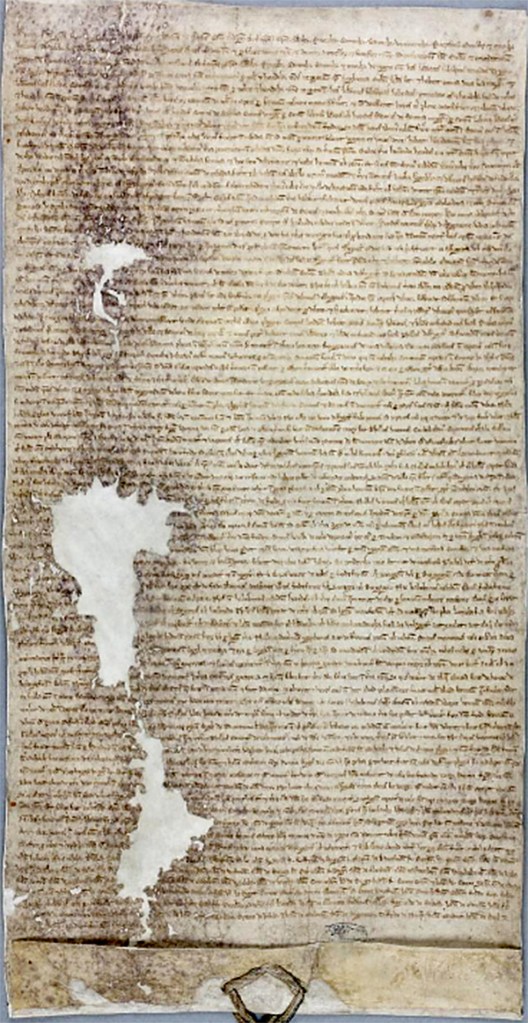This year marks the 800th anniversary of the issuing of the Magna Carta, the foundation of all modern English law. Since the founders of the United States were all of English descent, the Constitution they wrote to govern their country was based on the tenets of the Magna Carta.
The United States Constitution, in turn, influenced the Constitution adopted by the Commonwealth of Kentucky. In turn, the charter issued by the Commonwealth of Kentucky to organize Franklin County, carries within it ideas first enumerated in the Magna Carta. This also holds true of the charter issued by Kentucky to incorporate the city of Frankfort.

I know that at this point a number of you readers are saying the writer is incorrect concerning 2025 being the 800 year anniversary of the signing of the Magna Carta. It is true that the original Magna Carta was signed by King John in 1215, who, one must admit, signed the document under duress. John’s choice was to either sign the Magna Carta or lose his head to his barons who were in revolt.
However, John, after signing the document, never promulgated the Magna Carta as law of the land. When he died in 1216, the Magna Carta was not a governing document, and the barons continued to fight the crown and each other.
After John died in 1216, his son Henry III, a minor, became King. He was faced with an ongoing rebellion by his barons protesting real and imaginary grievances against the crown. The rebel barons even invited Louis, the eldest son of King Philip II of France, to govern England. The regency governing England in the name of Henry III reissued the Magna Carta and affirmed King Henry III’s adherence to it. The rebel barons were defeated in 1217 and Louis returned to France. In 1223, he became Louis VIII, King of France.
While the Battle of Lincoln in May 1217 preserved the crown for Henry III, it did not quash the underlying discontent percolating through England. There were continued references made by the clergy and the barons that King Henry III had not promulgated the Magna Carta of 1215, but his minority regency had.
Tiring of the constant low-intensity warfare facing the crown throughout the land of England, Henry III, in 1225, now of age to govern by himself, affixed his seal to the Magna Carta and made it the law of the land. However, this Magna Carta issued by Henry III in 1225 was not the same document signed by King John in 1215.
Various provisions that King Henry III found repugnant to his position as God’s chosen ruler of England were removed and other provisions were added, which codified the King’s royal position within the realm of England. The 1225 Magna Carta thus contains roughly 90% of the provisions of the 1215 Magna Carta, not removing any of the hard-fought-for provisions defining the nobility, clergy and non-nobility relationships to the crown.
Therefore, the document, which we cite today as the Magna Carta of 1215, is actually the Magna Carta of 1225. The two Magna Cartas are substantially the same, but with some especially important differences as to the proprietary rights of the crown. These crown proprietary rights have been whittled down over the centuries by Parliament to the point that, in 2025, the holder of the crown of England has little political power to govern his or her realm. Yet even today, the underlying philosophy of the Magna Carta influences how we, in Frankfort, treat one another.
Stop by the Capital City Museum and enjoy their exhibits on how Frankfort’s citizens have related to each other under the rules of law.










